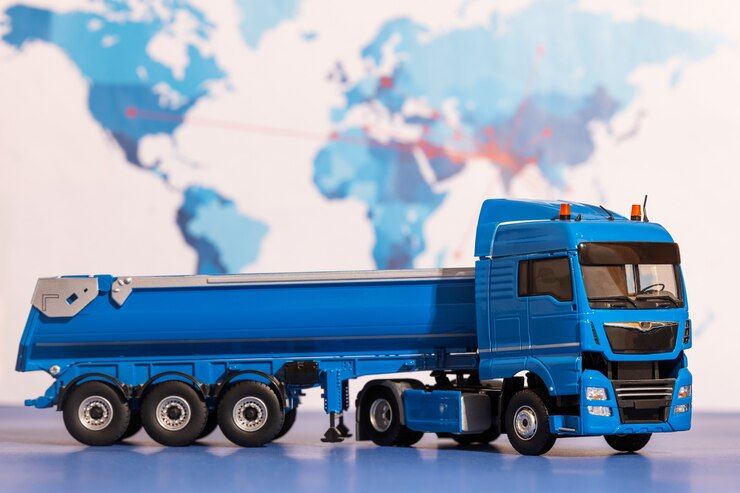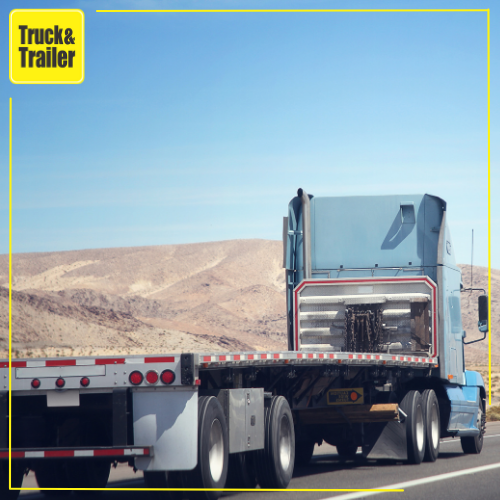In the world of long-haul trucking, fuel efficiency is a critical factor that can make or break a business. With rising fuel costs and environmental concerns, trucking companies are increasingly focused on optimising their fleets to reduce fuel consumption and greenhouse gas emissions. One key area where significant improvements can be made is in truck aerodynamics. By understanding and implementing aerodynamic design principles, trucking companies can unlock substantial fuel savings and reduce their carbon footprint. Looking to buy trucks for your business? Truck & Trailer has a wide range of trucks to suit any business type. Make your way to the website to find one that suits your requirements.
 Photo Source: Freepik
Photo Source: Freepik
The Importance of Aerodynamics in Trucking
Aerodynamics is the study of how objects move through air and the forces that act upon them. In the context of long-haul trucks, aerodynamics plays a crucial role in determining the vehicle's fuel efficiency. When a truck is in motion, it encounters resistance from the air, which results in drag. The higher the drag, the more energy is required to overcome it, leading to increased fuel consumption.
Key Aerodynamic Factors for Trucks
Shape and Design: The shape of a truck greatly influences its aerodynamic efficiency. Modern truck designs incorporate streamlined contours to reduce wind resistance. Rounded front ends, sloping hoods, and curved cab roofs help smooth the airflow around the vehicle, minimising drag.
Trailer Design: The trailer attached to the truck is also a significant factor in overall aerodynamics. Many trailers now feature aerodynamic enhancements like side skirts, rear fairings, and boat tails. These devices help reduce the turbulence created by the trailer, further enhancing fuel efficiency.
Gap Reduction: The gap between the tractor and trailer can create a significant amount of turbulence and drag. Technologies such as gap reducers and flow-control devices help minimise this gap, making the airflow smoother and more efficient.
Underbody Features: Trucks with smooth underbody panels experience less air resistance. Installing belly fairings and wheel covers can significantly reduce drag caused by air passing underneath the vehicle.
Side Mirrors and Accessories: Traditional side mirrors can create turbulence. Many trucking companies are now adopting camera systems and smaller, more aerodynamic mirror designs to reduce wind resistance.
Benefits of Improved Truck Aerodynamics
Fuel Savings: Perhaps the most significant advantage of optimising truck aerodynamics is the substantial reduction in fuel consumption. Even small improvements in aerodynamics can result in significant savings over time, especially for long-haul trucking operations.
Environmental Benefits: Lower fuel consumption means reduced greenhouse gas emissions. In an era of increasing environmental awareness and stricter emissions regulations, greener trucking practices are essential for both businesses and the planet.
Improved Handling and Stability: Enhanced aerodynamics can also improve the overall stability and handling of trucks, making them safer to operate, especially in adverse weather conditions.
Competitive Advantage: Trucking companies that invest in fuel-efficient, aerodynamic designs can gain a competitive edge. Lower operational costs can translate into more competitive pricing and higher profitability.
 Photo Source: Freepik
Photo Source: Freepik
Challenges and Considerations
While optimising truck aerodynamics offers numerous benefits, there are some challenges and considerations to keep in mind:
Cost: Upgrading trucks with aerodynamic enhancements can be expensive upfront. However, the long-term fuel savings often outweigh the initial investment.
Maintenance: Some aerodynamic features may require additional maintenance and care. It's essential for trucking companies to factor in maintenance costs when implementing aerodynamic solutions.
Regulatory Compliance: Trucking regulations vary by region and may impact the types of aerodynamic features a company can use. Staying compliant with local laws is crucial.
Overcoming the Challenges
To successfully implement and reap the benefits of improved truck aerodynamics, trucking companies can take several steps:
1. Invest Wisely:
While the initial costs may seem daunting, it's essential to view aerodynamic enhancements as a long-term investment. Calculate the potential fuel savings and return on investment (ROI) to make informed decisions about which aerodynamic features to incorporate.
2. Maintenance Planning:
Develop a robust maintenance plan that includes regular inspections and repairs for aerodynamic components. Preventative maintenance can extend the lifespan of these enhancements and ensure they continue to function optimally.
3. Stay Informed:
Keep up with changing regulations related to truck aerodynamics. Laws regarding aerodynamic devices and designs can vary by location, and it's crucial to stay compliant to avoid legal issues and fines.
4. Driver Training:
Train your drivers to understand the importance of aerodynamics and how their driving behavior can affect fuel efficiency. Techniques such as maintaining a consistent speed, reducing unnecessary idling, and avoiding sudden acceleration and braking can all contribute to better fuel economy.
5. Continuous Improvement:
The field of aerodynamics is continually evolving, with new technologies and designs emerging regularly. Stay informed about the latest advancements and be prepared to adapt your fleet as new, more efficient options become available.
Innovations in Truck Aerodynamics
As the demand for fuel-efficient trucks continues to grow, manufacturers and researchers are constantly developing innovative solutions to improve truck aerodynamics. Some of these advancements include:
Teardrop Trailers: Inspired by the shape of raindrops, teardrop trailers feature an aerodynamic profile that minimizes drag. These trailers have the potential to significantly reduce fuel consumption.
Active Aerodynamics: Some trucks are now equipped with active aerodynamic features that can adjust in real-time to optimise airflow. This includes movable panels, adaptive grilles, and even retractable trailer tails.
Wind Tunnel Testing: Manufacturers are increasingly using wind tunnels to fine-tune truck designs. These tests help identify areas of improvement and refine aerodynamic features for maximum efficiency.
Materials Innovation: The development of lightweight yet durable materials allows for more aerodynamic designs without sacrificing strength. Composite materials and advanced alloys are becoming more common in truck construction.
Truck aerodynamics is at the forefront of efforts to make the long-haul trucking industry more fuel-efficient, environmentally friendly, and economically sustainable. Embracing aerodynamic enhancements not only reduces operational costs but also helps reduce the industry's impact on climate change. By investing in these technologies, staying informed about regulatory changes, and fostering a culture of efficiency within their organisations, trucking companies can secure a prosperous and eco-conscious future for themselves and the planet. Truck aerodynamics isn't just a key to fuel-efficient hauling; it's a crucial step towards a greener and more sustainable industry. Do you need to purchase trucks for your company? Every kind of business can find trucks they need at Truck & Trailer.






